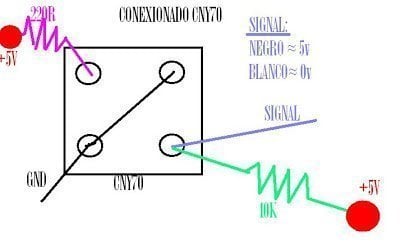Here the solar cell Panasonic AM-1456 is going to be tested in the lab. These measurements were taken in terms of choosing a solar cell for energy harvesting.
 A solar cell characterization is mostly necessary, because the datasheets are not complete or fully accurate. Also, each brand used different specifications, making complicate to compare them without testing unifying criteria.
A solar cell characterization is mostly necessary, because the datasheets are not complete or fully accurate. Also, each brand used different specifications, making complicate to compare them without testing unifying criteria.
The lab measurements were made with a variable RGB-LED as a light source and a variable load. The light-source parameter was the input current of the LED, but the relation between the current drawn by the LED and the illuminance value in lux could not be directly determined. Therefore, the open circuit voltage was compared to real measurements under specific light conditions converting them into linguistic variables of illuminance.
Each of the 5 solar cells were tested under 3 different wavelengths. As the solar irradiance can be considered constant in the visible wavelength range, the average value of the wavelength is computed. All the data were acquired, exported to an excel table and later plotted into current-voltage (I-V) and power against voltage curves.
Amorton
Amorton is a solar cell product line of Panasonic. They are amorphous solar cells with different characteristics, power and sizes. Here more info from the Panasonic catalogue.

The less powerful outdoor cell from Amorton has 18mW, which is too much in terms of power and dimensions (33×24 mm).
After the characterization, the total extracted power is 1.35 mW and the shortcut current is 1.35 mA, as it can be seen in graphs below.
The model AM-1456 has a size of only 25 x 10 x 1,1 mm, with a unit price of 5.2€. The drawback is, that the cell is designed to operate at indoor light conditions. This will minimize the solar power when the sun directly shines on the photovoltaic panel.
The other option in this product line of Panasonic, is to order a custom size solar cell, as mention previously, but this possibility is out of the project budget.






